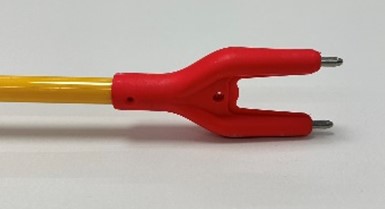England lost a fifth of the breeding herd

At the end of 2022, the breeding herd of females consisted of 237,000 HEAD compared to 295,000 head in December 2021, which is 20% less and 25% less than the 317,000 head registered in 2020. December breeding stock figures follow from June 2022 census data showing an 18% year-on-year decline.
The total hog herd in England decreased by 9.2% year-on-year to 3.7 million including a 7.9% reduction in fattening hogs. However, the figure for December 2022 represents a return to the typical hog population seen from 2017 to 2020 after peaking in December 2021.
Although broader data for the UK have yet to be released, the impact of the decline in England on UK hog production is likely to be significant, especially when the impact of lower slaughter weight is added, which will be felt over the next few months.
In its Pork Outlook for 2023, the AHDB forecasts a 15% drop in UK pork production in 2023 due to a decline in breeding stock, although the organization expects a gradual recovery in breeding stock throughout 2023 and beyond.
NPA Chief Executive Lizzie Wilson said: “These numbers are shocking, confirming the scale and pace of the cuts we have not seen before in this industry. But, at the same time, they are not surprising, given the depth and duration of the crisis. which swept the sector, and, unfortunately, for many manufacturers there was simply no way out"
“These numbers should send a signal to the rest of the supply chain about what happens when one part of it doesn't get a fair price for an extended period. We are now facing a shortage of pigs in the UK, with many of Europe's leading producing countries in the same boat as us, and the situation will only get worse in the coming months.
“We continue to call on the government to review the pork supply chain so that we can implement reforms that will ensure a more equitable and sustainable supply chain for all.”
Read together with it:
- С января по июль экспорт свинины из ЕС вырос на 1,6%На втором месте оказались Нидерланды с объёмом экспорта в 392 000 тонн. Дания экспортировала свинину в третьи страны с объёмом в 308 000 тонн, что примерно на 13% меньше, чем в предыдущем году. Германия экспортировала 180 000 тонн, что на 18% меньше, чем годом ранее. Это было обусловлено, главным образом, дополнительными ограничениями на экспорт, вызванными вспышкой ящура в начале года. Помимо зап...
- Лукашенко высказался против простых решений по Витебской области и действий по пути наименьшего сопротивления24 октября, Витебск. Президент Беларуси Александр Лукашенко на совещании по Витебской области высказался против принятия простых решений и действий по пути наименьшего сопротивления, передает корреспондент БЕЛТА. Свое требование глава государства пояснил на примере созданных ранее в регионе агропромышленных объединений. Президент напомнил, что тогда предлагалось вообще лишить самостоятельности рук...
- Modernization of poultry farming in the Nizhny Novgorod region: new opportunities and production growthThe project, implemented under the regional preferential lending program, allowed the Russkoye Pole agricultural holding to invest 440 million rubles. Regional Agriculture Minister Nikolai Denisov reported that the organized sector produced 88,400 tons of poultry MEAT in 2024 , with an expected increase to 93,8......
- Proper insemination of cows: how genetic and physiological factors influence herd productivityGenetics plays a significant role in determining the reproductive fitness of bulls, and daughter pregnancy rates should be compared to accepted standards. If a farm's performance falls short of the baseline, using less-than-optimal bulls can still improve fertility. Cow physiology is also crucial for successful insemination. Feed quality, housing conditions, and veterinary care directly impact res...
- The EU imposed sanctions against Medvedev's aide and the HSE rector.The sanctions include AvtoVAZ CEO Maxim Sokolov, Medvedev aide Oleg Osipov, HSE Rector Nikita Anisimov, three children's ombudsmen, a North Korean general, and others. In total, the EU has added 21 individuals to the sanctions list .As part of its latest sanctions package, the European Union imposed restrictive measures against individuals, including AvtoVAZ CEO Maxim Sokolov, Assistant to Deputy ...
- Jobs, Musk, Bezos: How Business Gurus Make Meetings Less ExhaustingSteve Jobs once refused to attend a meeting with the US President because the attendee list was too long. Anna Yoshitsugu, Senior Strategy and Development Manager at Uber, explains how business gurus prevent meetings from "stealing" their time.Let's say you hold one meeting each week, it lasts two hours, and there are ten people in attendance, each with an average salary of 1......
- How Trump moved to tough sanctions and abandoned a summit with PutinDonald Trump has changed his mind about meeting with Vladimir Putin in Budapest, and the US Treasury has imposed sanctions on two of Russia's largest oil companies. RBC investigated why the US president changed his position and what NATO is offering him. How Trump has changed his rhetoric toward RUSSIA.On the night of October 23, US President Donald Trump announced that he had cancelled a meeting ...





























































